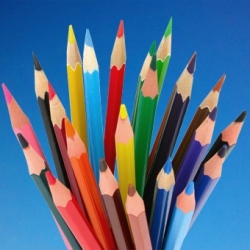
Nanoengineers from San Diego are opening the door to an era when anyone will be able to build sensors, anywhere, including physicians in the clinic, patients in their home and soldiers in the field. The team from the UCSD, developed high-tech bio-inks that react with several chemicals, including glucose.
They filled off-the-shelf ballpoint pens with the inks and were able to draw sensors to measure glucose directly on the skin and sensors to measure pollution on leaves. Skin and leaves aren’t the only media on which the pens could be used. Researchers envision sensors drawn directly on smart phones for personalized and inexpensive health monitoring or on external building walls for monitoring of toxic gas pollutants. The sensors also could be used on the battlefield to detect explosives and nerve agents.
The team, led by Joseph Wang, the chairman of the Department of NanoEngineering at the University of California, San Diego, published their findings in Advanced Healthcare Materials. Wang also directs the Center for Wearable Sensors at UC San Diego.
"Our new biocatalytic pen technology, based on novel enzymatic inks, holds considerable promise for a broad range of applications on site and in the field," Wang said.
The biggest challenge the researchers faced was making inks from chemicals and biochemicals that aren’t harmful to humans or plants; could function as the sensors’ electrodes; and retain their properties over long periods in storage and in various conditions. Researchers turned to biocompatible polyethylene glycol, which is used in several drug delivery applications, as a binder. To make the inks conductive to electric current they used graphite powder.
They also added chitosan, an antibacterial agent which is used in bandages to reduce bleeding, to make sure the ink adhered to any surfaces it was used on. The inks’ recipe also includes xylitol, a sugar substitute, which helps stabilize enzymes that react with several chemicals the do-it-yourself sensors are designed to monitor.
